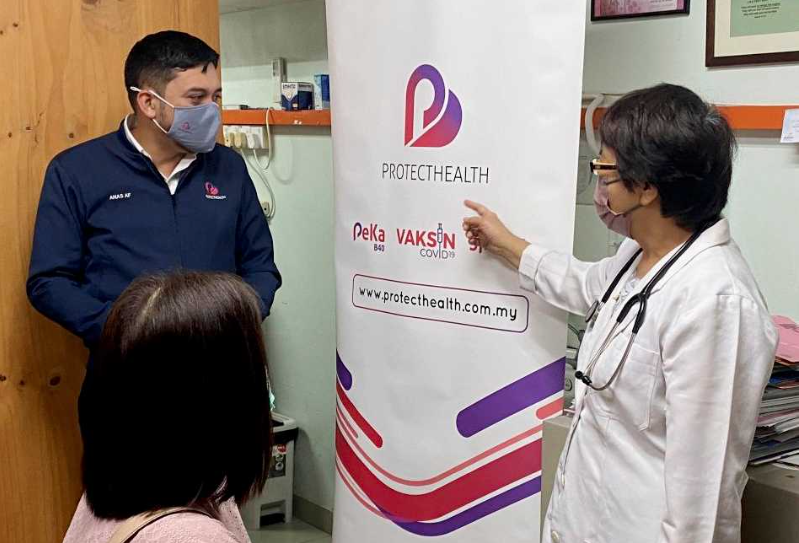 PETALING JAYA: Free health screenings and subsidised medical insurance for the B40 should be widened to include middle-income families who are also feeling the pinch from rising medical inflation, say stakeholders.
PETALING JAYA: Free health screenings and subsidised medical insurance for the B40 should be widened to include middle-income families who are also feeling the pinch from rising medical inflation, say stakeholders.
Federation of Malaysian Consumers Associations (FOMCA) chief executive officer Saravanan Thambirajah said many M40 households now face similar financial pressures as the B40, including higher medical costs, stagnant wages, and limited access to affordable private healthcare.
‚ÄúThey are the ‚Äėmissing middle‚Äô who fall through the cracks of social protection.
‚ÄúBy widening coverage through a shared-subsidy or co-payment model, the government can ensure more Malaysians are protected against unexpected medical expenses while keeping the schemes financially sustainable,‚ÄĚ he said.
He said this in response to Aon’s 2026 Global Medical Trend Rates Report which projects Malaysia’s medical inflation to hit 16% in 2026, well above the Asia-Pacific average of 11.3%.
Current health programmes for the B40 include Peka B40, which offers free check-ups, medical device aid, and early detection incentives for Malaysians aged 40 and above.
Complementing PeKa B40 is the mySalam initiative, which provides cash assistance for B40 Malaysians diagnosed with critical illnesses or hospitalised.
Saravanan suggested that the government expand eligibility for such schemes to M40 families, while continuing work to strengthen government hospitals, community clinics, and chronic disease services.
Malaysian Medical Association president Datuk Dr Thirunavukarasu Rajoo said that with medical inflation outpacing wage growth, many M40 households face the same healthcare affordability issues as the B40.
"It’s time to revise outdated B40 and M40 definitions and expand schemes like PeKa B40 and Perlindungan Tenang to include lower-M40 households.
‚ÄúThis isn‚Äôt charity, it‚Äôs protection for working families struggling to afford basic healthcare.‚ÄĚ
Financial planner Felix Neoh said expanding health coverage for M40 households must be done hand in hand with improving awareness and utilisation of existing schemes among the B40.
Figures from the Health Ministry‚Äôs Ō„Ĺ∂ ”∆ĶNow portal show that the screening rate for Peka B40 among eligible participants is highest in Kelantan at 48.5%, followed by Kedah at 40.1% and Perlis at 38.7%.
Meanwhile, screening rates are lowest in Kuala Lumpur (14.4%), Labuan (15.1%), and Selangor (22%).
Neoh said some states also have their own schemes, including Selangor’s Skim Peduli Sihat, Penang’s i-Sejahtera, and Sarawak’s Health Assistance Scheme for rural communities.
‚ÄúCombined with federal programmes, these can form a comprehensive safety net for low-income families,‚ÄĚ he said.
Financial planner Gunaseelan Kannan said such programme can ease the financial strain for low-income households if fully utilised.
“Schemes like mySalam and Perlindungan Tenang, which offers stamp duty exemptions on affordable insurance, make protection more accessible for both lower- and middle-income groups.
‚ÄúWith ongoing investments to upgrade hospitals and clinics, preventive and non-urgent care can often be managed effectively through public facilities,‚ÄĚ he said.
FOMCA's Saravanan said Malaysians should be proactive in managing healthcare costs.
‚ÄúConsumers should participate in screenings, use public-health facilities, and always request itemised billing when seeking treatment,‚ÄĚ he said.
He said the government on its part must ensure affordability and transparency in healthcare pricing to prevent excessive profit-taking in the private sector.
‚ÄúWithout effective oversight, medical inflation will continue to burden ordinary Malaysians and widen the gap between those who can and cannot care,‚ÄĚ Saravanan said.



